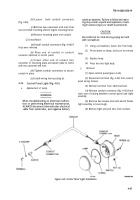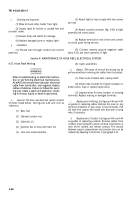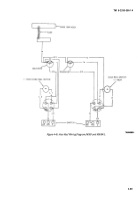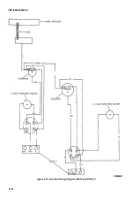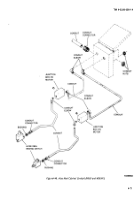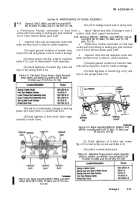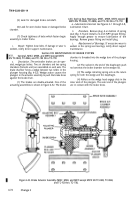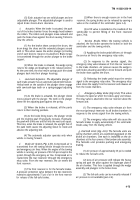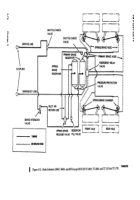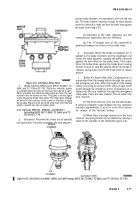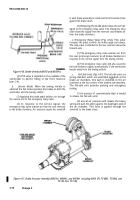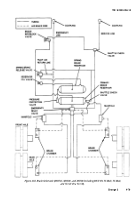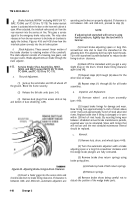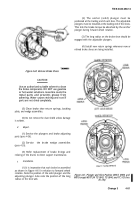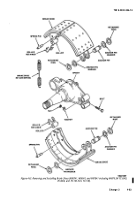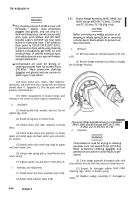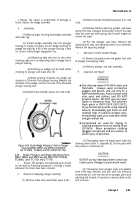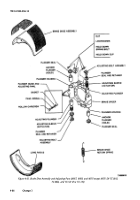TM-9-2330-356-14
SEMITRAILER, TANK: 5000 GALLON, BULK HAUL, SELF LOAD/UNLOAD M967 AND M967A1; SEMITRAILER, TANK: 5000 GALLON, FUEL DISPENSING, AUTOMOTIVE M969 AND M969A1; SEMITRAILER, TANK: 5000 GALLON, FUEL DISPENSING, UNDER/OVERWING AIRCRAFT M970 AND M970A1
TECHNICAL MANUAL; OPERATOR’S, UNIT, DIRECT SUPPORT, AND GENERAL SUPPORT MAINTENANCE MANUAL
OCTOBER 1990
TM-9-2330-356-14 - Page 213 of 528
TM 9-2330-356-14
Figure 4-54.
Emergency Relay Valve.
h.
Brake Interlock (M970 except M970 TC-0843, TC-
0844, and TC-103thruTC-178). The
brake interlock system
is activated when the door on the hose reel cabinet is open.
When actuated, the interlock valve sends air form the rear
reservoir into the service air line. This gives a service signal
to the emergency brake relay valve. The relay valve releases
air from the rear reservoir to the brake air chambers to apply
the brakes. Figures 4-53 and 4-56 show how the interlock
system connects into the air brake system.
4-32. General, M967A1, M969A1, and M970A1
Including M970 SN TC-0843, TC-0844, and TC-
103 thru C-178.
a.
Description. The
semitrailer brakes are air-operated
cam-type brakes. Two brake camshafts, two slack adjusters,
and two brake chambers are assembled to the front and rear
axle. The brake chamber movement through the slack adjuster
causes the camshaft to rotate and force the brake shoes against
the brake drumm (fig. 4-57).
(1) Attached to the slack adjusters are two
camshafts-one right-hand and one left-hand.
(2) The “S”-shaped part of the camshaft is
positioned between the rollers on the brake shoes.
b.
Actuation.
When the brake is actuated, air is
applied to the brake chambers and the diaphragm rod
moves the stack adjusters rotating the brake camshaft
against the two rollers on the brake shoes. This action
forces the brake shoes against the brake drum musing
friction to slow or stop the vehicle. When the brake is
released, spring action returns the brake shoes to release
position.
c.
Brake
Air System (Fig.
4-58). Compressed air is
transmitted from the towing vehicle through the service
and emergency air lines. When the engine of the towing
vehicle is running, air pressure of 90-120 psi is kept in the
system through the emergency airline. Compressed air is
routed into the rear reservoir through the emergency
relay valve. From the rear resevoir, the air enters the
front reservoir.
(1) The front reservoir is for the fail-safe brakes.
A pressure protection valve between the two reservoirs
maintains approximately 75 psi of air in the front reservoir
for release of the fail-safe brakes.
(2) When there is enough reserve air in the front
reservoir, the spring brakes can be released by opening a
valve on the roadside of the semitrailer (para 2-4).
Figure 4-55. Fail-Safe Unit (M967, M969, and M970 except M970 SN TC-0843, TC-0844, and TC-103 thru TC-178).
Change 3
4-77
Back to Top

